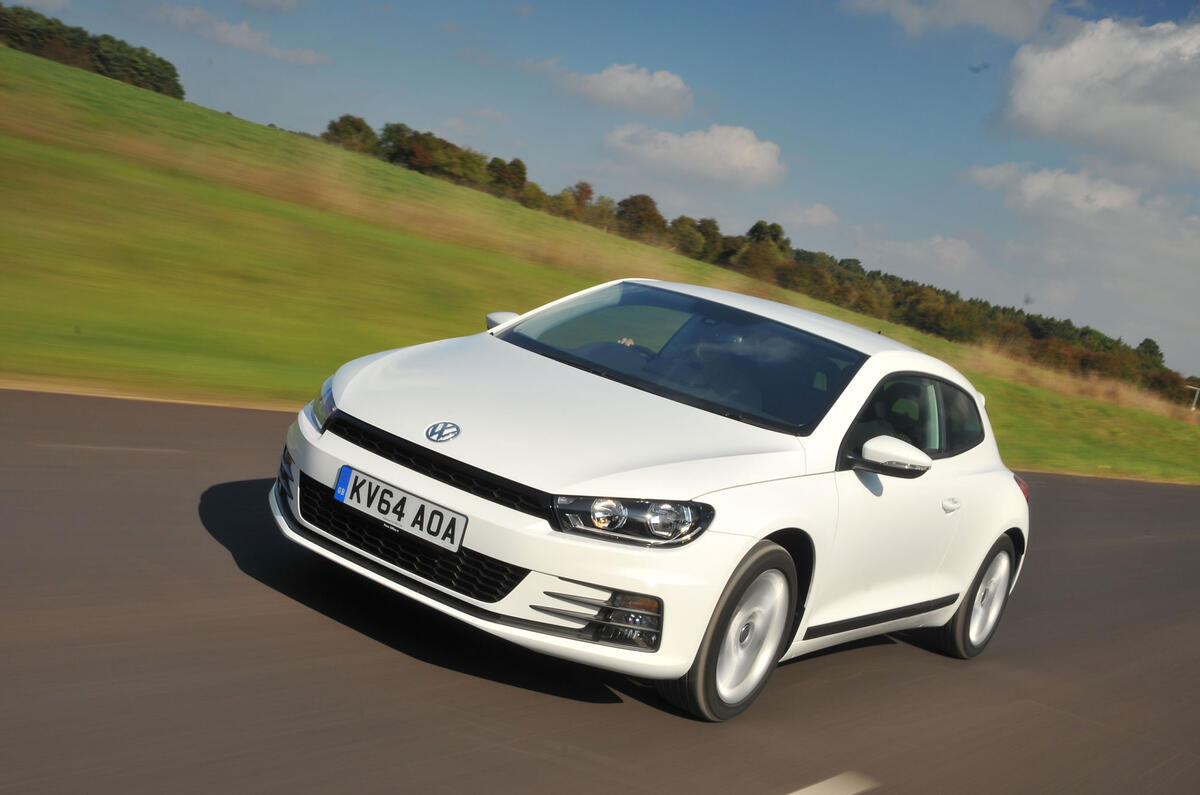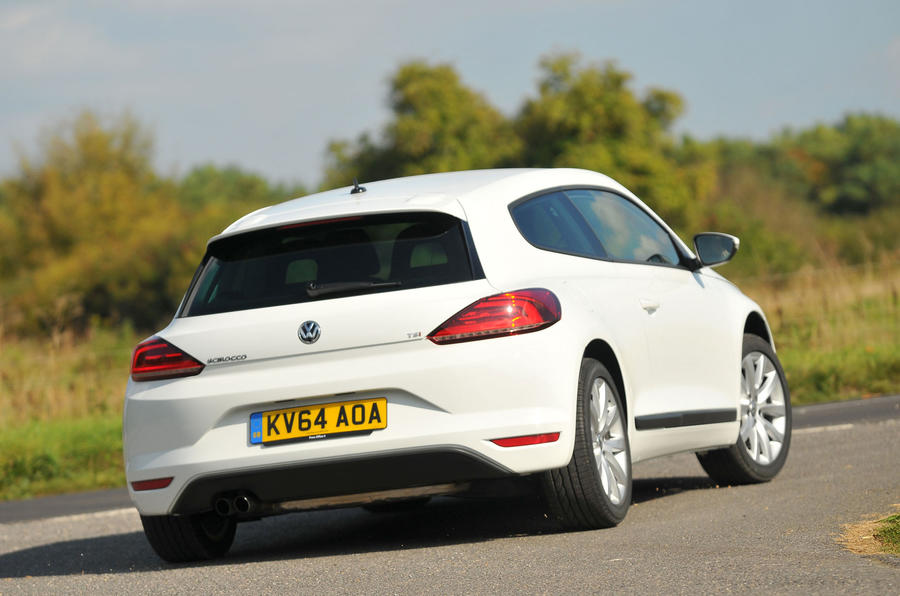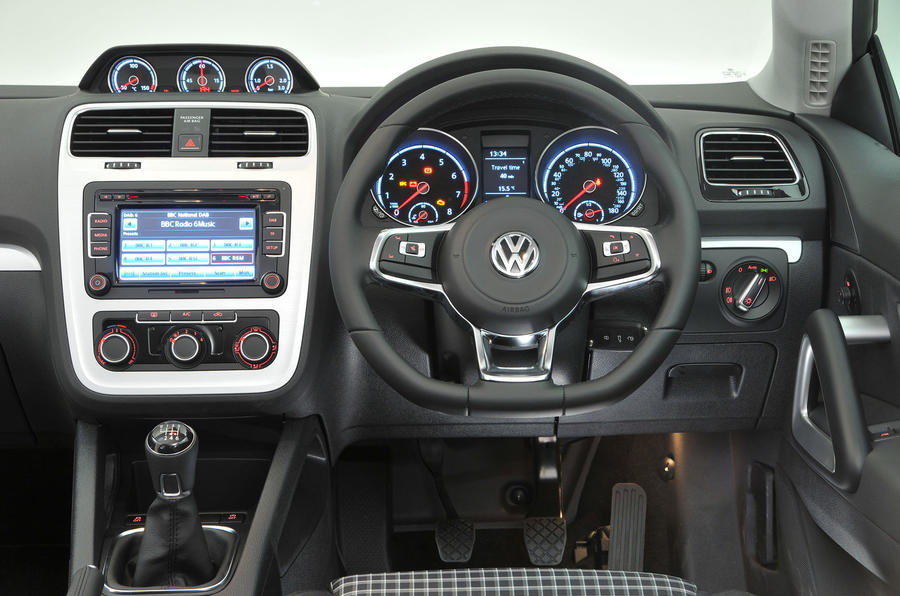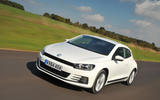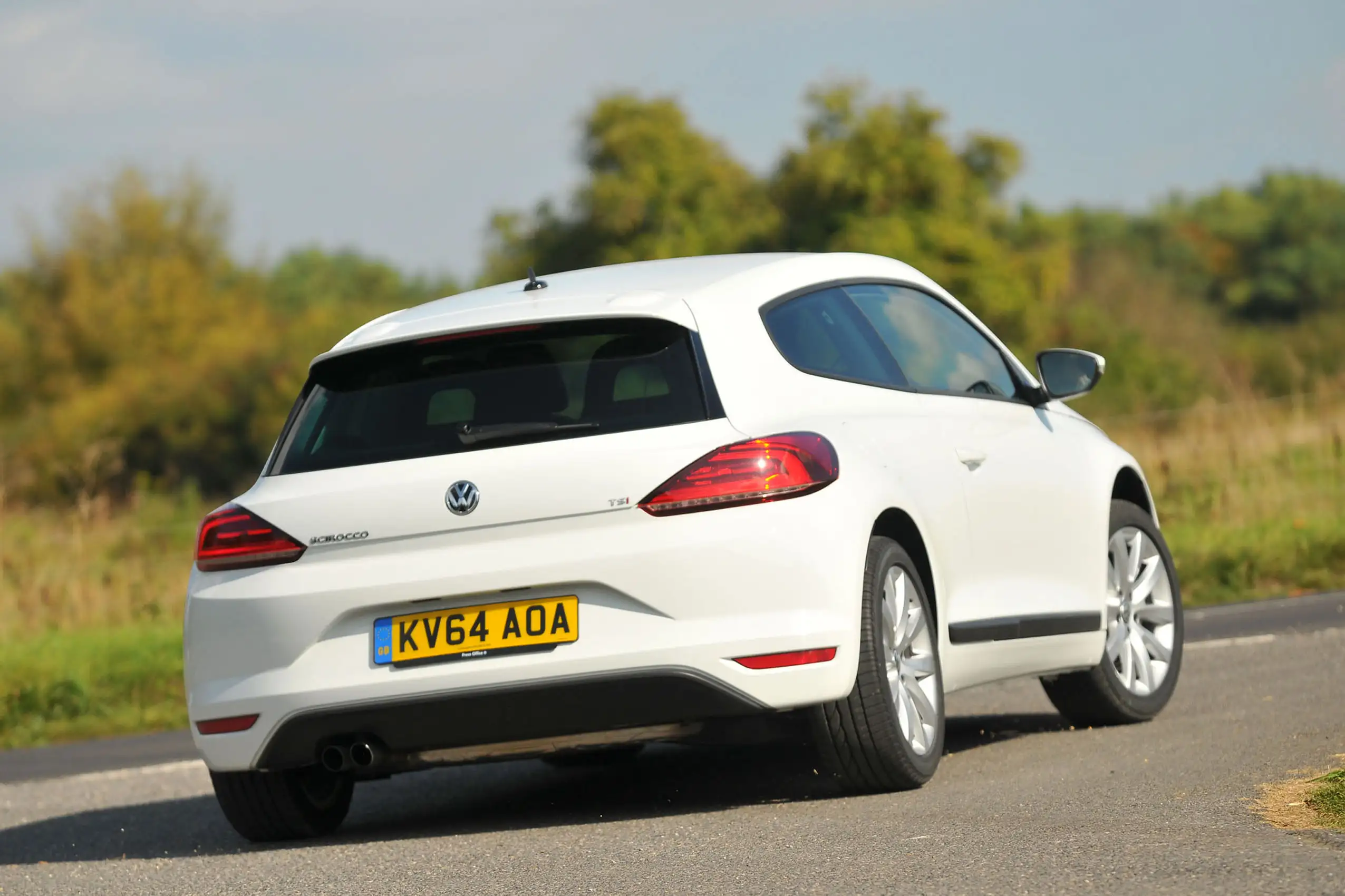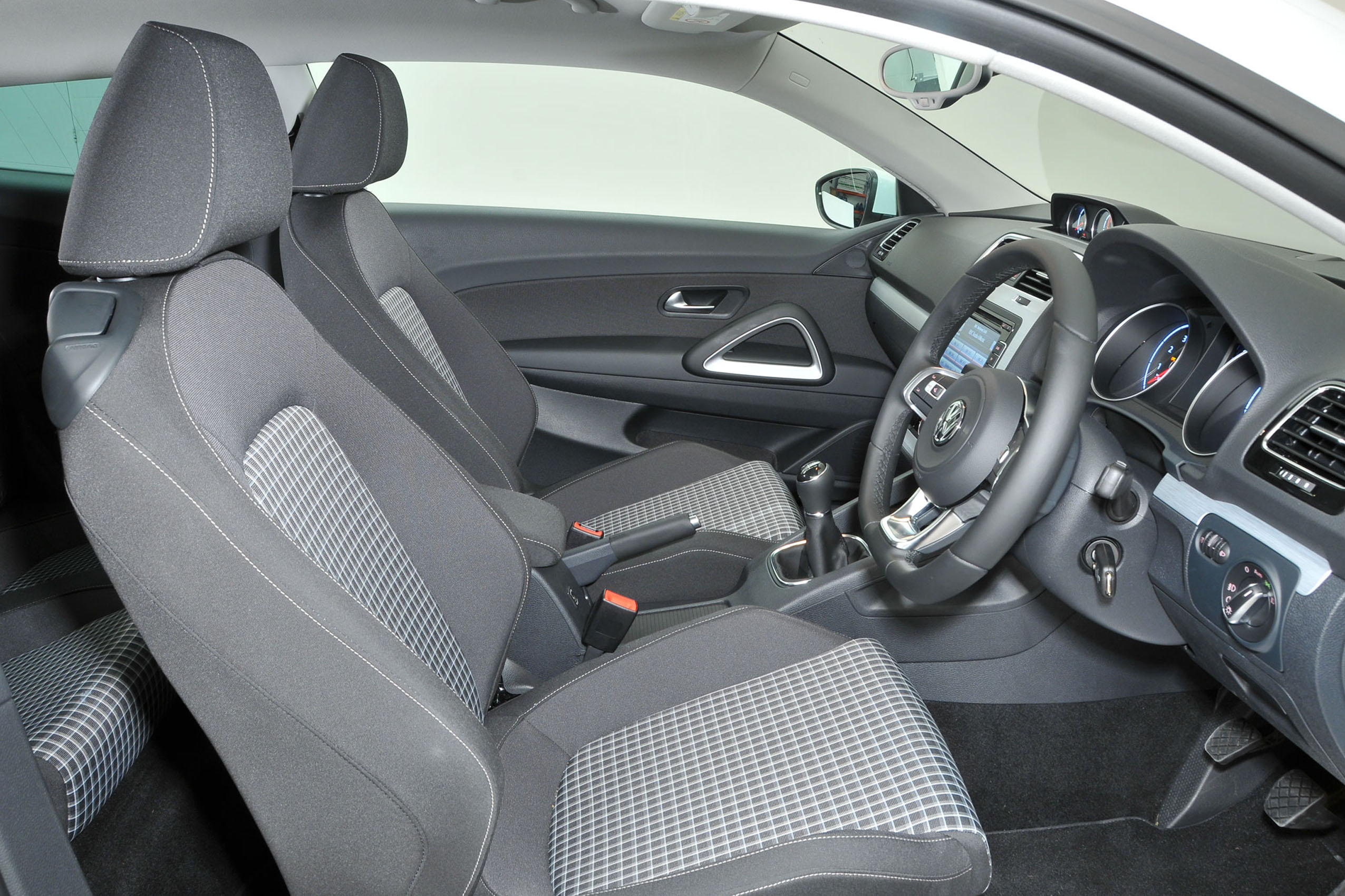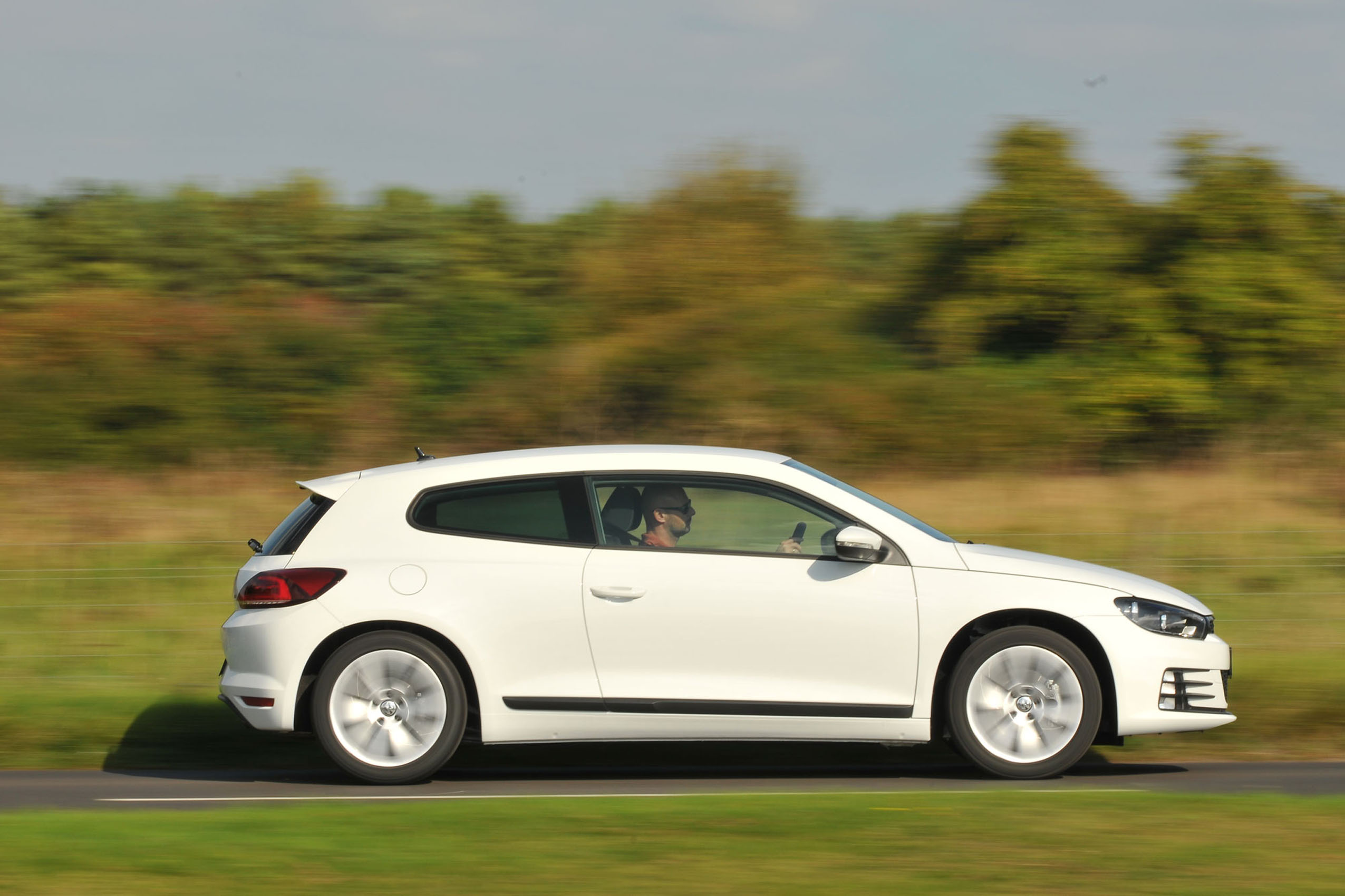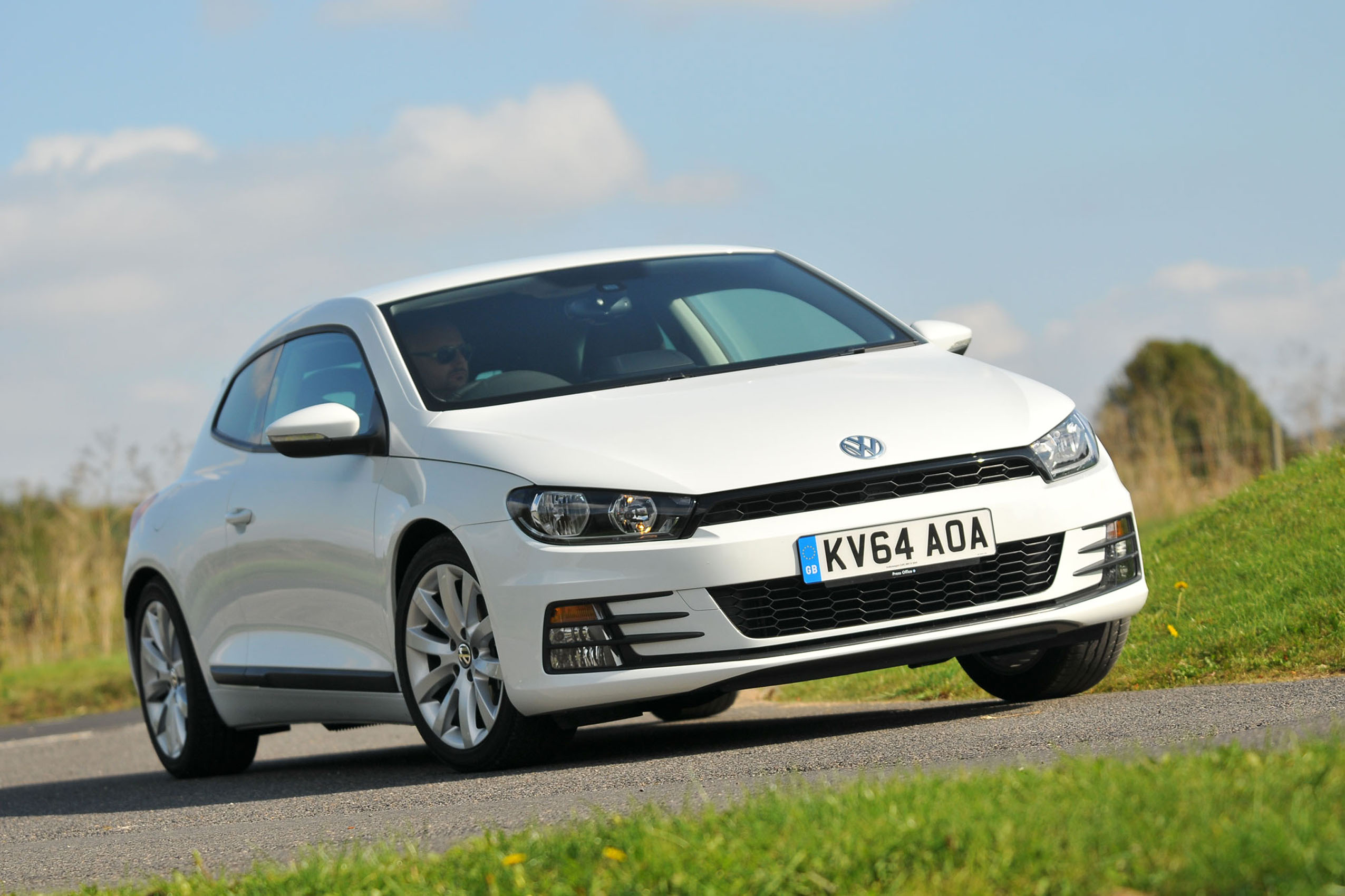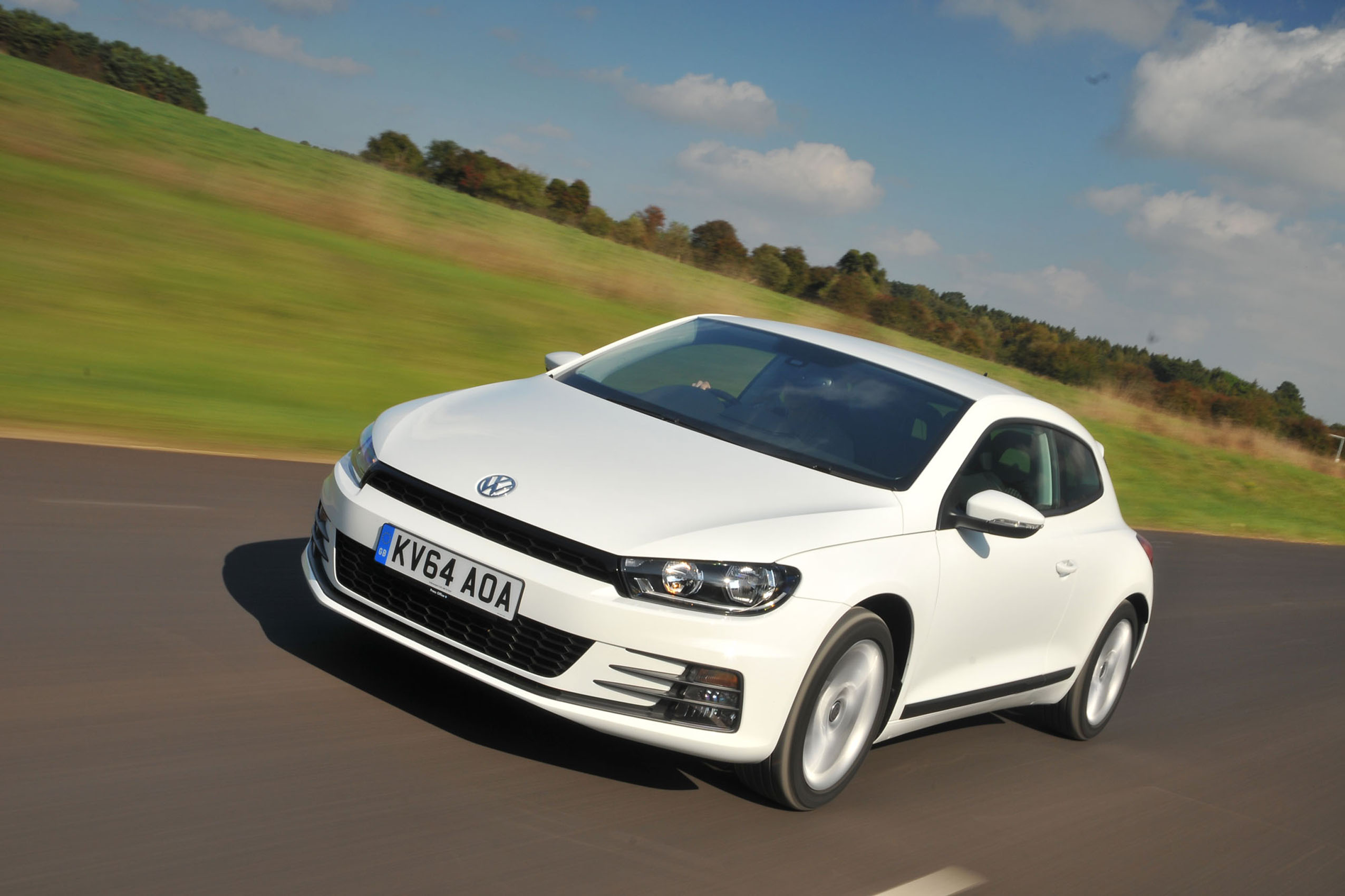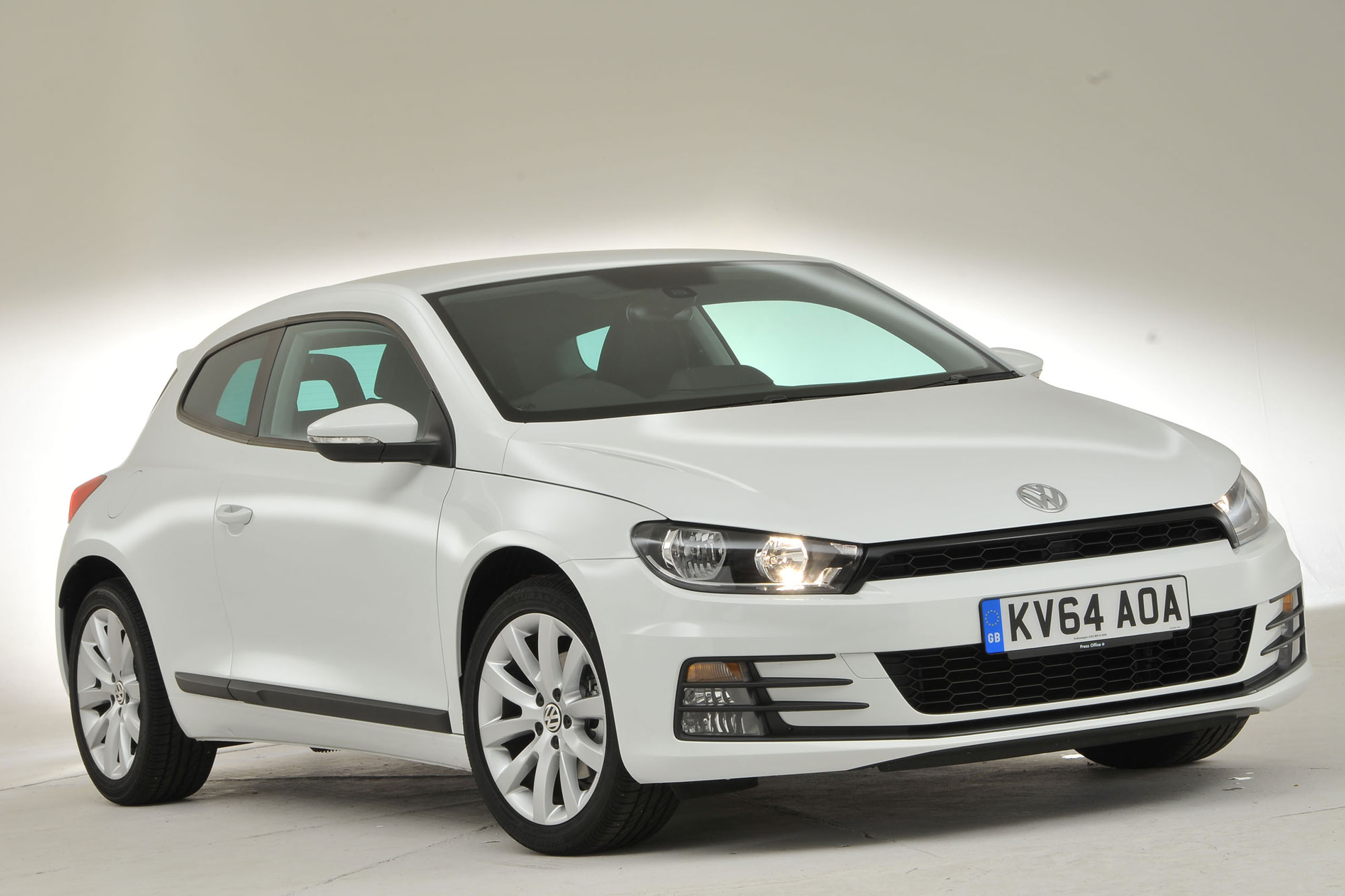The Volkswagen Scirocco’s cabin is an inviting place to sit, although we would argue that it’s too indistinct from the cockpits of both the Volkswagen Golf and Volkswagen Passat, and too conservative for such an apparently sporting car.
The deeply sculpted seats cradle your body perfectly; you sit quite low (not always the case with coupés derived from hatchbacks), and with the thick-rimmed, leather-bound steering wheel, the scene is promisingly set.
That high waistline and those slim windows make seeing out of the Scirocco harder than either your children or you will like. All-round visibility is further compromised by notably thick A-pillars.
As you’d expect of any Volkswagen, the minor controls have been set out with much thought for their position and clarity, a work ethic that extends to the infotainment screen that’s a paragon of simplicity to understand and operate.
Evidence of further clear thinking is found in the back, a place too often left as an afterthought in cars such as this. The boot is less than 20 percent smaller than a Volkswagen Golf’s and the seats still fold.
Of course, the rear cabin is nothing like as spacious as that of a BMW 4 Series coupé but these are still very usable seats, unlike those of, say, the equivalent Audi TT.
Highlights reserved for the R included aluminium inserts in the instruments – resplendent with an R logo – and a smattering of high-gloss black accents.
The R got new Recaro seats: they were even better than the excellent standard ones and didn’t totally destroy room in the rear – so often an afterthought in these types of cars, but seemingly given somewhat higher priority in the Scirocco.
As mentioned earlier, there were seven trim levels to choose from - Scirocco, GT, GT Black Edition, R-Line, R-Line Black Edition, GTS and R. Entry-level models got 17in alloy wheels, a roof spoiler, brake discs all round, front electric windows, automatic lights and wipers, and electrically adjustable and heated wing mirrors on the outside as standard.
Inside, there was air conditioning, a cooled glovebox, and Volskwagen's Composition infotainment system complete with a 6.5in touchscreen display, DAB radio, Bluetooth and USB connectivity.
Upgrade to GT and the Scirocco gains 18in alloy wheels, front foglights, sat nav, speed limit display, climate control, parking sensors and VW's Car-Net online services, while opting for the GT Black Edition, which added black alloys, wing mirrors, roof and rear spoiler.
The mid-range R-Line models included 19in alloy wheels, an R-Line bodykit, leather upholstery, and electrically adjustable and heated front seats, while the R-Line Black Edition adds numerous glossy black details to the exterior.
Topping the range was the GTS and R Sciroccos, with the former coming with 18in alloy wheels, a chrome twin exhaust system, a sporty bodykit, sports seats, a golf ball gearknob and numerous GTS badges dotted inside and outside the car, while the latter got 19in alloys, adaptive sports suspension, bi-xenon headlights, LED day-running-lights, a rear diffuser and an electronic locking differential.


